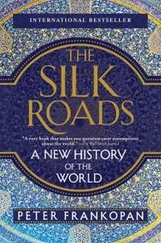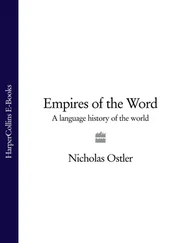Evidently, total conquest, military and even spiritual, is not always enough to effect a language change. Yet at times an apparently weaker community can achieve just this. Consider Aramaic, the language of nomads, which swept through an Assyrian empire still at the height of its power in the eighth century BC, replacing the noble Akkadian, which went back to the very beginning of Mesopotamian civilisation. Or consider Sanskrit, taken up all over South-East Asia in the first millennium AD as the language of elite discourse, even though it came across the sea from India backed by not a single soldier. It even appears that Quechua, which became the language of the Inca empire in Peru in the fifteenth century, had actually been adopted as a dynastic compromise: the rulers gave up their own language in order to secure orderly acceptance of a vast extension of their power.
Economic power, often believed to lie at the root of the spread of English, whether under British or American sponsorship, seems even less coercive than the military. Phoenician shipping dominated the trade of the Mediterranean for most of the first millennium BC; for much of that time, it was backed up in the west by the dominance of the Phoenician colony of Carthage, which spoke the same language. But the Phoenician language seems to have remained unknown outside its own settlements: Greek was the lingua franca for international discourse, used even in the Carthaginian army. Farther east and later on, in the sixth to eighth centuries AD, the queen of the Silk Roads to China was the Iranian city of Samarkand: its language was Sogdian, but who has heard of it? Sogdian merchants, rich as they were, found it politic to use the customers’ languages—Arabic, Chinese, Uighur-Turkic and Tibetan. [240] Whitfield (1999: 36).
In that muscular quote, Firth had emphasised the religious dimension of power, and this is often important: perhaps, indeed, we should be talking not of language prestige but language charisma. Sanskrit, besides being the sacred language of Hinduism, has owed much to disciples of the Buddha; and Hebrew would have been lost thousands of years ago without Judaism. Arabic is more ambiguous: in the long term, Islam has proved the fundamental motive for its spread, but it was Arab-led armies which actually took the language into western Asia and northern Africa, creating new states in which proselytising would follow. Arabs were also famous as traders round the Indian Ocean, but the acceptance of Islam in this area has never given Arabic anything more than a role in liturgy. Curiously, the linguistic effects of spreading conversions turn out to be almost independent of the preachers’ own priorities: Christians have been fairly indifferent to the language in which their faith is expressed, and their classic text, the New Testament, records the sayings of Jesus in translation; and yet Christianity itself has played a crucial role in the preservation of, and indeed the prestige of, many languages, including Aramaic, Greek, Latin and Gothic.
In fact, proselytising religion has been a factor in the careers of only a minority of world languages. It could be claimed that religion is just an example of the cultural dimension of language, which represents the ultimate source of language prestige. Culture, of course, is an extremely vague word, covering everything from the shaping of hand-axes to corporate mission statements, as well as the finer appreciation of the sonnets of Shakespeare and the paintings of Hokusai; so its relevance will need considerably closer attention. [6] It is also an inherently dangerous term, hard to separate from sweeping attempts to evaluate the achievements of whole peoples. (See, e.g., Macaulay’s notorious verdict on Sanskrit- and Arabic-based cultures (see Chapter 12, ‘Changing perspective—English in India’, p. 496).)
In the analysis of prehistoric movements of peoples, and the apparent ruthlessness with which one comes to replace another (as in the Bantu-speaking peoples’ spread across the southern third of Africa, with consequent restriction of the domains of the San and Khoi; or the penetration of Austronesian sailors into South-East Asia and into contact with Melanesians), there is little reluctance to discuss the cultural factors presumed to have given the advantage. Finer arts and higher learning are not usually considered serious contenders. Cultural factors that enhance the ability to support larger populations (for example, by new forms of farming or husbandry) are deemed especially important. But simple innovations in military practice may also be effective.
Occasionally, brute biology takes over, and mere cultural differences are left on the sidelines, for a time irrelevant. If a population was vastly more liable to die from disease, as were the invaded inhabitants of the New World facing European interlopers in the sixteenth century, it hardly mattered that their weaponry and military tactics were also vastly inferior—or by contrast that the vegetables they cultivated (including potatoes and maize, tomatoes and chocolate) turned out to be world-beaters.
But the search for the causes of language prevalence is not usually so easily resolved. In the historic record of contacts between peoples, and contests between languages—when we have eyewitness testimony to keep us honest about what really went on—we often cannot point to cultural differences that were clearly crucial. Then we may have to look deeper: not just into the perceived associations of the different communities, how they looked to each other, the language communities’ subjective reputations as well as their objective advantages, but even—and this is deeply unconventional, especially among linguists—to the properties of the languages themselves.
Bizarrely, linguists almost universally assume that the basic properties of languages which they study—the kinds of sounds a language uses, its basic word order, whether it works by stringing together short and independent words or by coordinating systems of prefixes or suffixes—are irrelevant to languages’ prospects of survival. After all, they reckon, every language is by definition learnable by children: that’s what makes it a human language. If a community has problems propagating its language, there must be a social cause, not a linguistic one.
But for us, viewing the language as distinctive of the community that speaks it, we can only wonder what all that linguistic structure is there for. Perhaps a language’s type even has survival value, determining whether a new population that has long spoken another language can readily take it up or not. This is one of the innovations of this book: to suggest ways in which it might actually matter what type of a language a community speaks. (See Chapter 14, ‘What makes a language learnable’, p. 552.)
The plan of campaign for the book as a whole is to review, more or less in temporal order, the histories of languages that have loomed large in the world. It starts from the onset of literacy, because that is when we first have clear evidence of what languages people were speaking. Our policy at every point has been to require explicit evidence, in effect written traces, and so to pass over many events that are believed to have happened in a pre-literate past. [7] This has led to the total omission of two important known language spreads, and one conjectured one. The Polynesian islands gained their dozens of closely related languages over the four millennia from 3000 BC in perhaps the most intrepid sustained exploration ever. And the Bantu languages spread across southern Africa over much the same period, beginning in Cameroon and ending at the Cape. Both of these stories are crucial to understanding the full pattern of languages in today’s world, but they are based purely on archaeology and linguistic comparisons. We have not a single word recorded from all the talk of those aeons. As for the geographical path of Indo-European, the ancestral language that is reconstructed to make sense of the evident systematic relationships among Hittite, Sanskrit, Russian, Armenian, Greek, Latin, Gaulish, Lithuanian and English, and many, many more, we can only speculate, and those speculations are the stuff of historical linguistics, not of language history.
And the story continues until we confront the major languages of recent growth, what we have called ‘M&A’ languages.
Читать дальше











